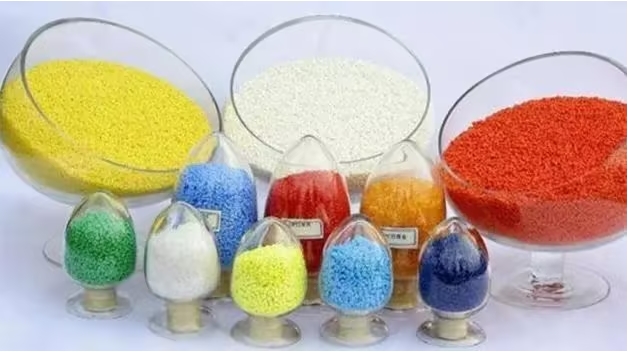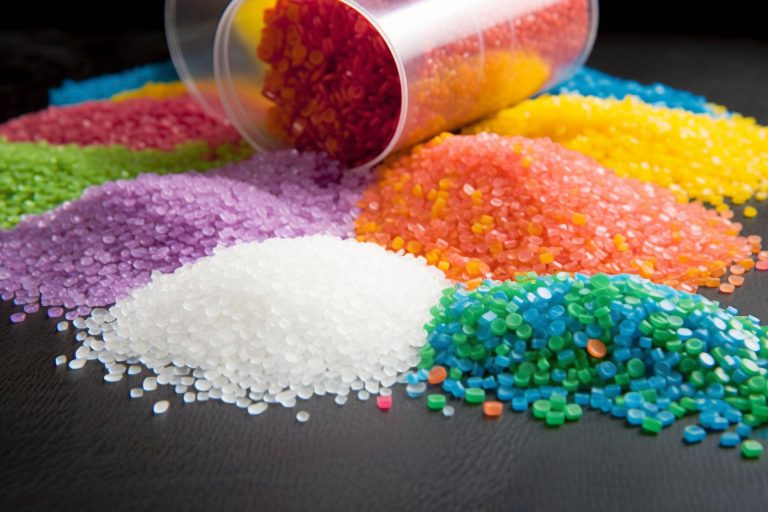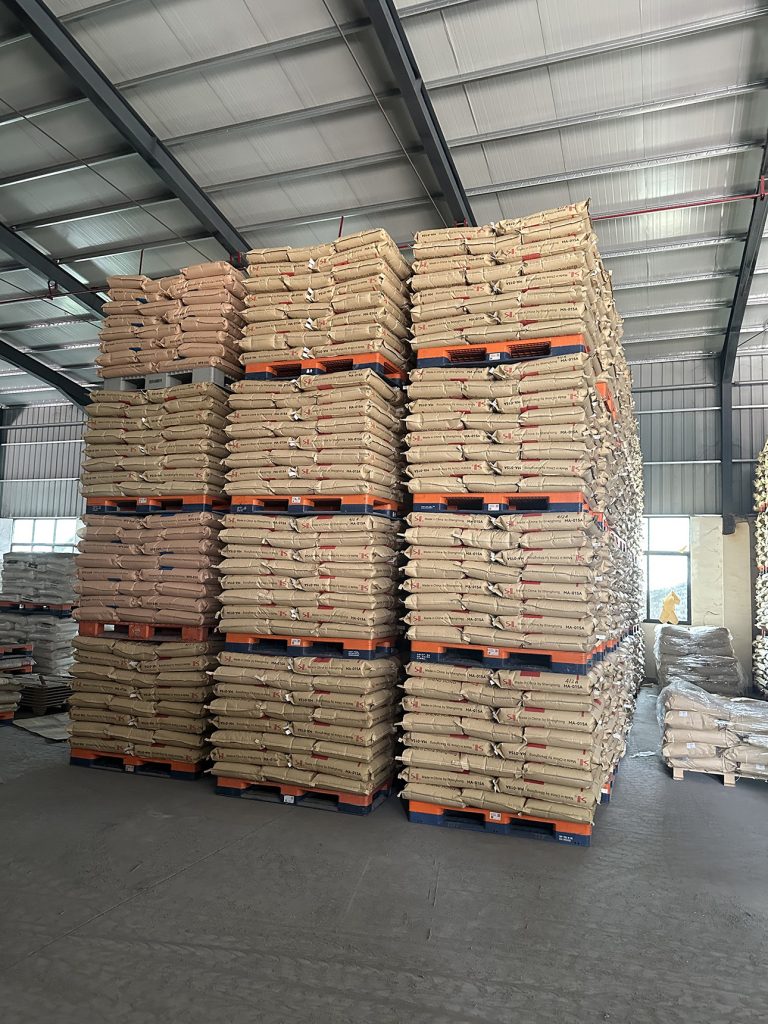Modified plastic classification and development history
1. Overview of plastics and their modification
Plastics are compounds formed by the polymerization of various polymers in the petrochemical industry through addition or condensation reactions. Plastic has fluidity and plasticity under certain temperature and pressure, can be shaped into a certain shape, and remains unchanged under certain conditions. With its characteristics of light weight, high strength, insulation, transparency, and wear resistance, plastics are widely used in various production activities of human society and are the main basic materials of modern life.
Plastics can generally be divided into three categories based on their use and characteristics: general plastics, engineering plastics, and special engineering plastics.
General plastics generally refer to plastic resin varieties with high production, wide applications, low prices, and wide impact, accounting for over 90% of the total production.
Engineering plastics generally have higher prices and better performance than general plastics, and are mainly suitable for industrial use. Among them, polycarbonate (PC), polyamide (PA), polyoxymethylene (POM), polyester (PBT and PET), and polyphenylene oxide (PPO) are known as the five major engineering plastics with a wide range of applications.
Special engineering plastic resin refers to products with better physical and chemical properties than engineering plastics and stricter technical standards, mainly used in high-end electronic and electrical, special industries, aerospace and other special fields.
Although unmodified plastics have advantages such as low density, corrosion resistance, and good insulation, some plastics themselves have disadvantages such as poor heat resistance, high thermal expansion coefficient, easy combustion, and poor low temperature resistance. They are prone to aging under atmospheric, sunlight, long-term pressure, or certain media, which limits their application in many downstream fields and segmented products.
With the development of modern society, some downstream application fields have continuously increased material requirements, and existing materials are difficult to meet the needs of practical applications. Plastic modification has become an important research topic. Modified plastics are based on basic materials, by adding different modifiers and using blending, reinforcement and other technical methods, to improve the flame retardancy, strength, impact resistance, low temperature resistance, anti-static and other properties of plastics, broaden the downstream application fields of plastics, achieve the goal of “replacing steel and wood with plastics” and increase the added value of plastic products.
At present, the application of modified plastics covers various fields of the national economy, such as 3C electronics, automobiles, home appliances, office equipment, new energy, rail transportation, medical care, precision instruments, aerospace, etc.
2. Classification of Modified Plastics
Modified plastics are processed through modification technology based on plastics, and have significant individual characteristics. Modified plastic manufacturers usually conduct research and development and production according to the specific needs of downstream industry materials, expanding the application fields of modified plastics and providing differentiated competitive market space for major modified plastic manufacturers.
After plastic modification, its physical and mechanical properties have been greatly improved, such as flame retardancy, high strength, high toughness, high impact resistance, wear resistance, and earthquake resistance. The overall performance improvement provides a foundation for its downstream applications. Modified plastics can be classified according to the type of substrate and the direction of modification. Among them, they can be roughly divided into flame retardant resins, reinforced and toughened resins, plastic alloys, functional colorants, etc. based on their modified properties.
3. The difference between modified plastics and unmodified plastics in application fields
There is no strict boundary between the downstream application industries of modified plastics and unmodified plastics, and there is some overlap in the application fields. Generally speaking, when the material performance requirements are relatively single and commonly used unmodified plastics can meet the requirements, customers often use unmodified plastics as raw materials for production and manufacturing. Such raw materials generally have the characteristics of bulk and universality; When the performance of unmodified plastics is insufficient to meet the specific needs of customers, or when customers intend to replace some expensive unmodified engineering plastic raw materials used in the production process, modified plastics are usually used.
Based on industry experience and downstream customer applications, unmodified plastics are mainly used as raw materials in industries such as basic daily necessities and product packaging; In fields with complex usage scenarios and high material performance requirements such as 3C electronics, new energy vehicles, and smart homes, modified plastics have been widely used.
4. The Development History and Current Status of Plastics and Modified Plastics in China
The modified plastics industry has a long history of development in many developed countries. Large international chemical enterprises such as BASF, Langsheng, DuPont, Saudi Basic Industries Company, etc. have obvious advantages in business scale, technological accumulation, and integrated operation. They are in a leading position in the formulation research and development, processing and manufacturing, and brand quality of high-performance specialized modified plastics. Their products are widely used in high-end fields, and the characteristics of bulk shipment of single products are quite obvious.
Compared to other countries, China’s plastic industry started relatively late and entered a period of rapid development after the reform and opening up. By introducing advanced processing technology and equipment on a large scale, actively attracting foreign investment, and vigorously strengthening the transformation of scientific and technological achievements, it has promoted the rapid development of the entire plastic industry and its modification industry chain. However, due to various reasons, the domestic plastic modification processing industry has problems of weak technology and small scale, especially in the sub fields with higher technological content such as modified engineering plastics and modified special engineering plastics, where there is a significant gap.
The domestically produced modified plastic products have the characteristics of more mid to low end products and a lack of high-end products, which cannot meet the needs of China’s transition from a manufacturing powerhouse to a manufacturing powerhouse and industrial high-end development. Therefore, modified plastics, as an important component in the field of chemical new materials, have been listed as one of the key technological fields for development by the country.
After years of development, China has gradually gained advantages in the construction of global 3C electronics, automobiles, especially new energy vehicles, household appliances, electronic communication, new energy and other industrial chains. The trend of “replacing steel with plastic” and “replacing wood with plastic” in the field of basic materials in the industry continues to strengthen, creating a favorable industrial environment for the development of modified plastics.
According to data released by the National Bureau of Statistics and others, from 2010 to 2021, the production of primary forms of plastics in China increased from 43.609 million tons to 110.39 million tons, with a compound annual growth rate of 8.81%. According to data, the production of primary forms of plastic in China was 113.67 million tons in 2022, and reached 119.02 million tons in 2023, showing an overall upward trend.
According to the “China Plastics Industry Yearbook (2020)” and data from China Commercial Industry Research Institute, Sihan Industry Research Institute, Forward looking Industry Research Institute, etc., from 2010 to 2021, the production of modified plastics in China increased from 7.05 million tons to 26.5 million tons, further increased to 28.84 million tons in 2022, and is expected to reach 34.21 million tons in 2024.
The modification rate, as a key indicator for measuring the development level of the modified plastics industry, has increased from 16.2% in 2010 to 25.4% in 2022. Although significant growth has been achieved, there is still a considerable gap compared to the global plastic modification rate of nearly 50%. According to the prediction of the China Synthetic Resin Association, with the enrichment of downstream application fields and the improvement of material requirements, the domestic plastic modification rate is expected to reach 30% by 2024, and the application fields of modified plastics will be further expanded, with broad development space in the future.
5. Overview of upstream and downstream of modified plastics
The upstream direct raw materials of modified plastics mainly include various basic synthetic resins such as general plastics, engineering plastics, and special engineering plastics, such as PC, PA, PPS, PP, PE, etc. The main source of basic synthetic resins is products from the petrochemical industry. The downstream products of modified plastics are diverse and have a wide range of applications, including 3C electronics, automobiles, home appliances, office equipment, new energy, rail transportation, medical care, precision instruments, aerospace and many other industries. Moreover, most of the products in downstream industries are directly aimed at consumers. Therefore, the development status of downstream industries and changes in the demand of social consumer groups have a significant driving effect on the development of the modified plastics industry, affecting its market size, development speed, and development direction.
Overall, there are numerous downstream industries for modified plastics, and each manufacturer operates based on their own industry accumulation, customer structure, product types, application areas, etc. The competition is relatively dispersed, and there is great potential for sustainable development in the future.
免责声明:
1.本站部分文章为转载,其目的在于传播更多信息,我们不对其准确性、完整性、及时性、有效性和适用性等任何的陈述和保证。本文仅代表作者本人观点,并不代表本网赞同其观点和对其真实性负责。
2.国伽蓉科技一贯高度重视知识产权保护并遵守中国各项知识产权法律。如涉及文章内容、版权等问题,我们将及时沟通与处理。



